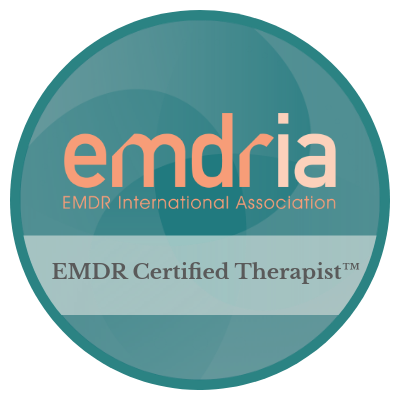Being a BIPOC (Black, Indigenous, Person of Color) professional often means carrying invisible weight — the extra mental and emotional labor of navigating spaces that weren’t designed with us in mind. Race based stress means the stress you feel due to racism. Sometimes, racism is bold and in your face, and other times, it can be subtle, but felt in the air that we breathe in certain spaces. I remember my early days as a social worker, sitting in team meetings where I was among the only Latina clinicians, feeling the familiar tension in my shoulders as I calculated each word before speaking. I noticed the non-verbal grins of approval and disapproval or doubt based on who was presenting, how well their English was, their skin color, or how liked (or disliked) they were by leadership. I couldn’t help but notice who got the slap on the wrist and who got the write up in their file. And even the harsh reality that some BIPOC were revered, praised and liked when they did extra and unpaid work or double the workload of other peers was painful to watch, even though I understood it and many times, subscribed to the same habits and ideals. It was clear: racism and a culture seeped in white supremacy impacts BIPOC mental health (and overall health… this is a chapter in the book I’m co-writing on race-based trauma).
And it doesn’t end as you move up the leadership ladder too. For BIPOC who become a part of management or leadership, the transition can also be painful and not received openly by many non-BIPOC staff members or even colleagues. Many of us know this dance too well — the constant awareness, the subtle adjustments, the energy spent managing others’ perceptions, or reinforcing White Supremacy culture that we might not align with. While organizations talk about diversity and inclusion (and many, many who are actually removing these words from their vernacular as I type), the reality is that many BIPOC employees still face daily microaggressions, cultural disconnection, and the exhaustion of being BIPOC in their departments. Creating safe spaces for BIPOC employees isn’t just about having a space to vent — it’s about cultivating healing environments where we can show up as our full selves, share our experiences without explanation or qualification, and draw strength from collective wisdom. This safety offers us sacred spaces where we can exhale, knowing we’re truly seen and understood.
Creating safe spaces for ourselves will also be crucial — not for the sake of coping, but rather to tend to your soul when you’re in the not so safe spaces or in moments of suffering.
Tending to ourselves in these spaces requires intentional practices that honor our experiences and restore our energy:
Self-Soothing Practices:
- Place your hand on your heart while taking deep breaths during difficult moments
- Keep grounding objects in your workspace that connect you to your culture and identity
- Step outside for fresh air when you need to reset your nervous system
- Create a playlist of songs that remind you of your strength and resilience
- Practice gentle movement at your desk to release physical tension
Self-Validation:
- Acknowledge the reality of your experiences without minimizing them
- Write down moments when you’ve navigated challenging situations with wisdom
- Remember that your cultural perspectives bring valuable insights to your workplace
- Trust your gut feelings about uncomfortable situations
- Recognize that your reactions to microaggressions are normal responses to abnormal situations
Self-Advocacy:
- Document instances of concern in a private journal
- Connect with other BIPOC professionals who can witness and validate your experiences
- Set clear boundaries around your time and emotional labor
- Identify allies within your organization who can support necessary changes
- Practice direct communication about your needs and experiences when you feel safe to do so
Acceptance:
- You might have to accept that the places we are in are completely problematic, unjust, and simply, not healthy for you. And this is not your fault and completely outside your control.
- Make a list of what you have control over and what you don’t
- Ask yourself, “what is the next right thing for me?”
- Search within yourself to decide how to continue to survive or thrive in the environment, or outside of it.
- This might mean that you make the decision to leave this place of employment
- Think about what it means for you to live a meaningful life and whether your workplace is in the same direction or contributes to this meaning
- Also, consider that your health is a part of living a meaningful life.
Creating workplace support builds on these individual practices by fostering collective strength. When we come together, we transform individual coping into community healing — cada paso cuenta (every step counts) in building workplaces where we can thrive, not just survive.
Do you resonate with this? Are you finding your mental health suffering because of racism and stress in your workplace? Workplace trauma and race-based trauma is very real. I treat workplace and race-based trauma with EMDR therapy to help you process these events. I also use DBT skills to help you learn skills to self-soothe, advocate for yourself and work toward building daily skills that get you closer to living that meaningful life.
For my busy professions or employees with difficult schedules, I offer EMDR Intensive Sessions.
What are EMDR Intensives?
Deep and focused EMDR therapy sessions that go for several hours in a day or throughout a few consecutive days.
Benefits of EMDR Intensives
- Longer sessions provide uninterrupted depth and expedite the processing of disturbing memories
- Meets the scheduling needs of clients who cannot meet weekly for several months
- Process a memory from beginning to end
- Feel better quicker! Experience immediate relief from symptoms that have persisted for a long time
- Save time, money and gas. Our sessions are virtual and uninterrupted
EMDR Intensives are for you if:
- You’ve been in therapy for a while now and noticing that your sessions end right when you’re getting into the heart of your issue
- You know logically what you need to do, but your body still feels triggered and unsafe, and you can’t stop yourself from doing the same behaviors that cause problems for you
- Your relationships or work are suffering because of the overwhelm you feel
- You don’t have the time in your schedule to commit to months of weekly therapy, but you can take a day or two off for intensive sessions
- Your current therapist does not offer EMDR and you’re willing to take a small break from them. You can always go back to them after the intensive. EMDR works great as an adjunctive treatment.
If you’re curious about whether an EMDR Intensive might be right for your healing journey, let’s connect for a consultation. You can email me at sofia@sofiamendozalcsw.com to inquire about scheduling and pricing. Together, we can determine if this concentrated approach to trauma healing aligns with your needs and goals.
Remember — healing doesn’t always follow a linear weekly schedule. Sometimes, our most significant breakthroughs come when we create the space for focused, intentional work on the patterns and systems that have shaped us.
Read more about EMDR intensives here.




